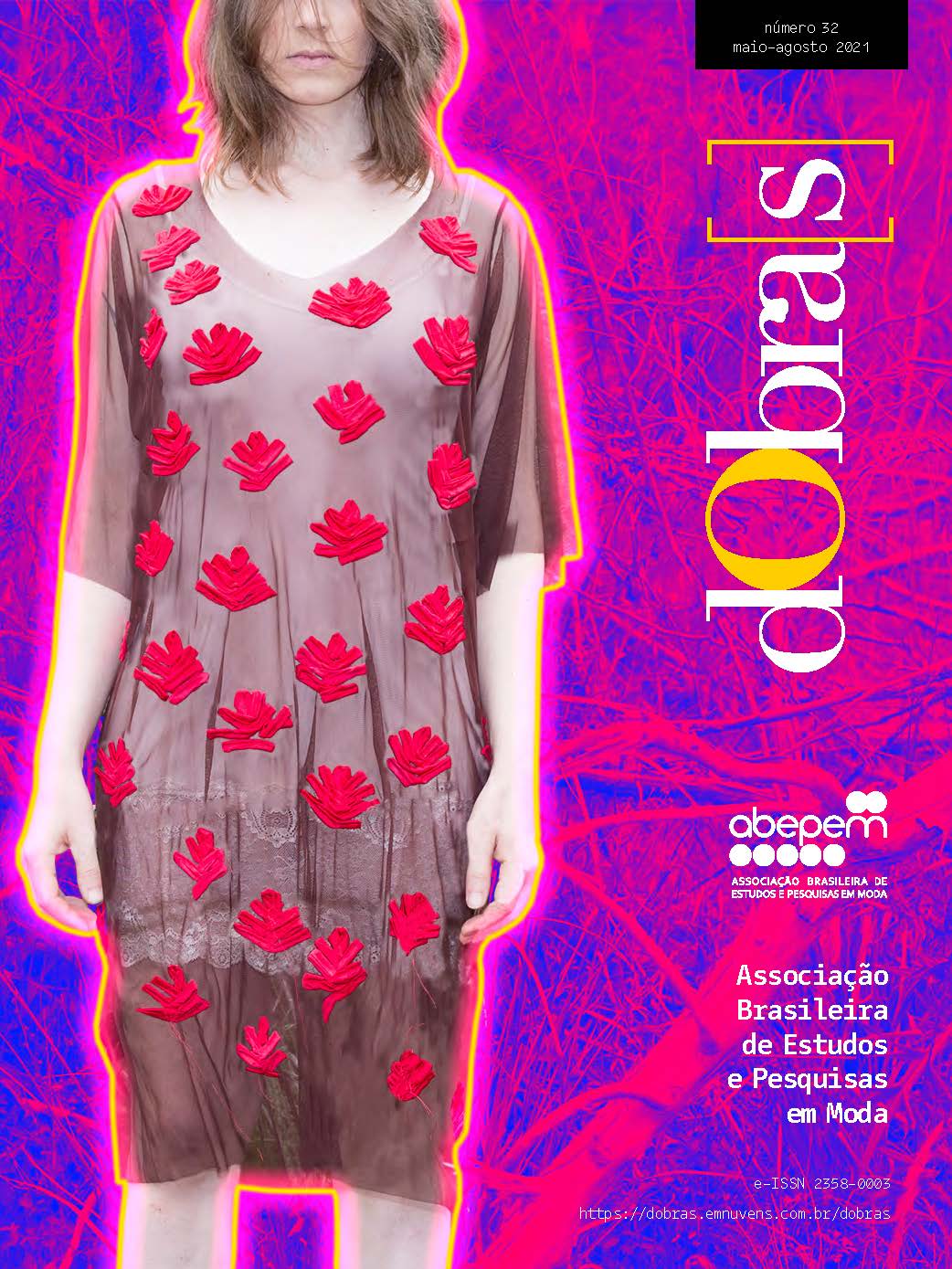Lojas Marisa
a promessa do preço baixo nas vitrinas da avenida Paulista
DOI:
https://doi.org/10.26563/dobras.i32.1373Palavras-chave:
Moda, Consumo popular, Sociossemiótica, Marisa, Regimes de visibilidadeResumo
O presente trabalho2 busca compreender como a rede de lojas Marisa, que veste os grupos sociais populares desde sua criação, se reconstrói, ressignificando-se como ponto de venda de moda, e de que maneira, como destinador doador de competências, Marisa leva a moda para aqueles que apreendem a moda como um valor a ser cultivado. O objetivo desta pesquisa é analisar como é estar entre os globais na avenida Paulista sem deixar de ser local, além de apresentar o novo conceito da rede varejista e de seu público consumidor. Para tal fim, o artigo analisa as vitrinas da loja localizada na avenida Paulista com a rua Peixoto Gomide, selecionada por melhor caracterizar esse novo modo de interação e de construção da visibilidade da marca. Para o estudo das manifestações, a base teórica foi a da semiótica proposta por Algirdas Julien Greimas e as complementações de Eric Landowski, Jean-Marie Floch e Ana Claudia de Oliveira. Desse modo, concluímos que Marisa, ao instalar-se na avenida Paulista, coloca-se em um lugar de destaque que nenhuma outra loja da rede possui, e esta é uma visibilidade da versatilidade requintada que produz uma estetização do vestir os grupos sociais populares. Sendo assim, sobre a plataforma de valores práticos — sobre os quais outrora estiveram alicerçados os valores da marca — há um investimento simbólico, que faz parte da construção da Marisa como uma marca que tem competência para colocar as pessoas na moda e que está na moda.
Downloads
Referências
DEMETRESCO, Sylvia. Vitrina: teu nome é sedução. São Paulo: Pancron, 1990.
FIORIN, José Luiz. A metonímia. Revista Língua Portuguesa, São Paulo, p. 26-27, 1 fev., n. 64, 2011.
HOUAISS, Antônio. Dicionário Houaiss da Língua Portuguesa. Rio de Janeiro: Objetiva, 2009.
LANDOWSKI, Eric. Aquém ou além das estratégias, a presença contagiosa. Tradução Dilson Ferreira Cruz Júnior. Revisão Eric Landowski. Documentos de Estudo do Centro de Pesquisas Sociossemióticas, São Paulo, CPS, n. 3, 2005.
LANDOWSKI, Eric. Gosto se discute. In: LANDOWSKI, Eric; FIORIN, José Luiz (comp.). O gosto da gente, o gosto das coisas: abordagem semiótica. São Paulo: Educ, 1997. p. 97-160.
LANDOWSKI, Eric. Interacciones arriesgadas. Tradução Desiderio Blanco. Lima: Universidad de Lima, Fondo Editorial, 2009.
LANDOWSKI, Eric. Presenças do outro. Trad. Mary Amazonas L. de Barros. São Paulo: Perspectiva, 2002.
OLIVEIRA, Ana Claudia de. Vitrinas: acidentes estéticos na cotidianidade. São Paulo: Educ, 1997.
SEMPRINI, Andrea. A marca pós-moderna: poder e fragilidade da marca na sociedade contemporânea. Trad. Elisabeth Leone. 2. ed. São Paulo: Estação das Letras e Cores, 2010.
Downloads
Publicado
Como Citar
Edição
Seção
Licença

Este trabalho está licenciado sob uma licença Creative Commons Attribution-NonCommercial-ShareAlike 4.0 International License.
Direitos Autorais para artigos publicados nesta revista são do autor, com direitos de primeira publicação para a revista. Em virtude de aparecerem nesta revista de acesso público, os artigos são de uso gratuito, com atribuições próprias, em aplicações educacionais e não-comerciais









